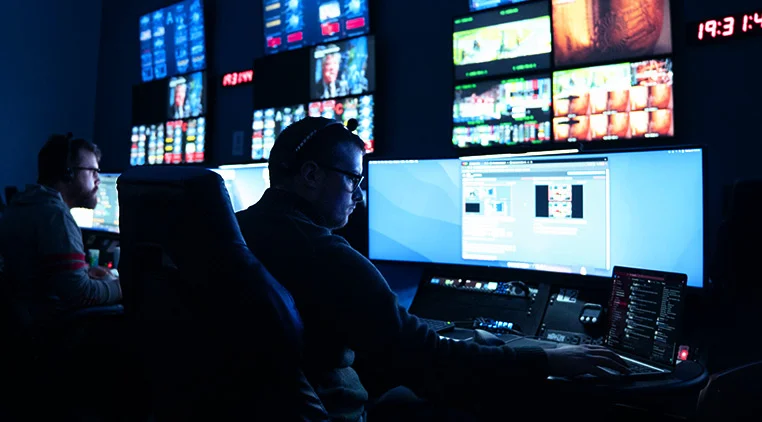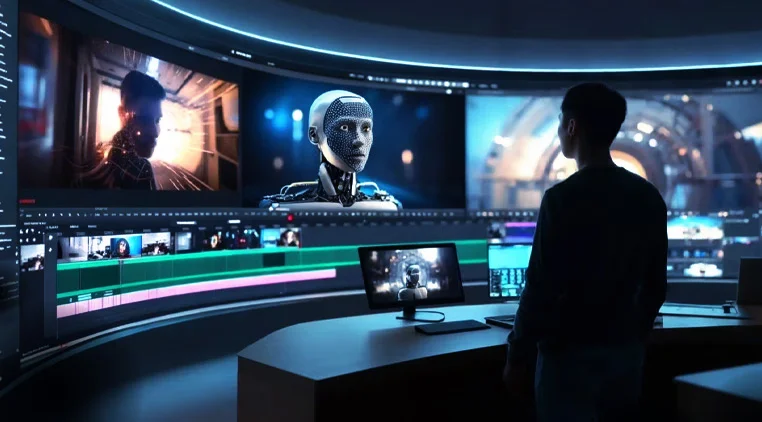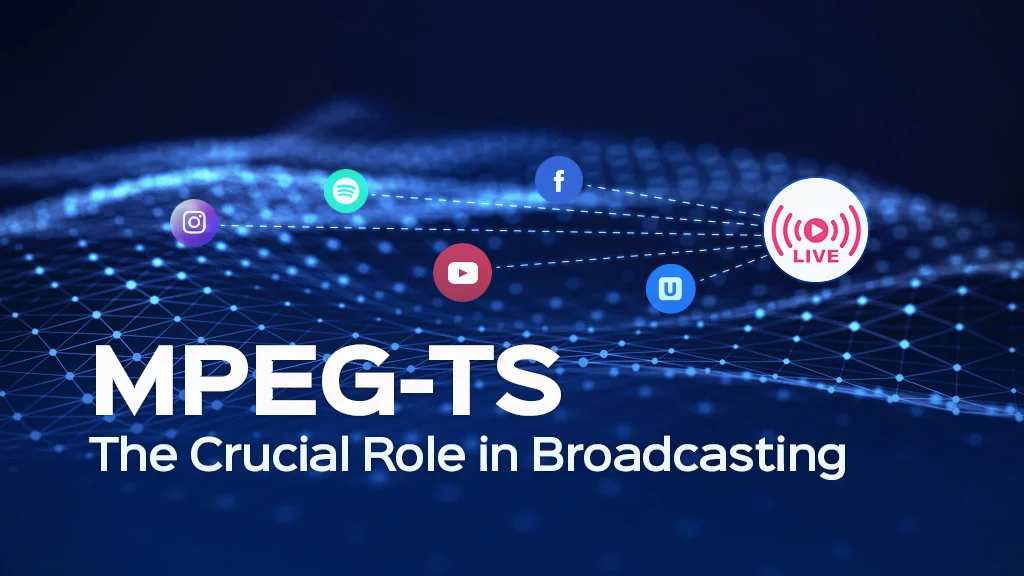
- Article
Video Editing in Broadcasting: A Detailed Perspective
Video editing in broadcasting plays a crucial role in shaping narratives, engaging audiences, and maintaining high production quality. The primary purpose of video editing is to enhance storytelling by carefully selecting and arranging perfect audios and videos, ensuring clarity, and emphasizing the key messages. In broadcasting, editors work with various types of content, including news, interviews, documentaries, entertainment shows, sporting events, … in live or pre-recorded formats.
Each of these content types requires a unique editing approach; for news for example, a real-time and accurate editing is required, while documentaries focus on in-depth narratives that weave together interviews and footage.
Overall, video editing in broadcasting is a dynamic blend of creativity and technology, requiring editors to not only master their tools but also stay attuned to evolving audience preferences and industry standards.
Importance of video editing in broadcasting industry
Here are some key points highlighting the video editing importance in broadcast industry:
1. Enhancing Storytelling
Narrative Structure: Video editing in broadcasting allows editors to craft a coherent and compelling narrative by selecting the best audios and videos, then arranging them in a special message or content centric sequence.
Emotional Engagement: Effective editing can evoke emotions and create a connection between the content and the audience, making the story more impactful.
2. Maintaining Viewer Interest
Pacing and Rhythm: Proper pacing keeps viewers engaged by controlling the tempo of the story, ensuring that it flows correctly and holds attention.
Dynamic Presentation: Incorporating a variety of shots, angles, and transitions helps to maintain visual interest and keeps the audience invested throughout the broadcast.
3. Clarity and Focus
Message Conveyance: Editing helps distill complex information into digestible segments, making it easier for audiences to understand the primary message of the content.
Emphasis on Key Elements: By highlighting significant moments or points, editors can guide viewers’ focus on what matters the most in the story.
4. Quality Control
Production Value: High-quality editing ensures that the final broadcast production meets the professional standards, enhancing the overall visual and auditory experience.
Error Correction: Video Editing removes mistakes or redundant information, ensuring a polished and refined final output.
5. Brand Identity
Consistency: A distinct editing style can help establish brand identity for a broadcasting network, making content recognizable to viewers.
Attention to Aesthetics: Well-edited videos reflect a commitment to quality, which can enhance the reputation of the broadcasting organization.
6. Adaptability for Multiple Platforms
Cross-Platform Delivery: Editing allows content to be tailored for various formats, such as social media, television, and online streaming, making it more resilient.
Targeting Different Audiences: Different formats may require unique editing styles to resonate with specific demographics, allowing broadcasters to expand their reach.

Revolution of video editing in broadcasting
The revolution of video editing in broadcasting has been marked by significant technological advancements, shifts in workflow, and changing audience expectations. In the past, video editing was an analog process involving physical tape splicing and linear editing systems, which were time-consuming and required meticulous planning. The introduction of digital video editing software in the late 20th century transformed the industry by allowing editors to easily cut, rearrange, and manipulate audios and videos without the limitations of physical tape.
As broadcasting transitioned to high-definition (HD) and ultra-high-definition (UHD), video editing tools evolved to accommodate higher resolutions and better-quality images, raising industry standards for production value. Advanced color grading tools now allow editors to enhance visual aesthetics dramatically, ensuring that videos meet the high expectations of modern audiences.
The ability to seamlessly integrate visual effects and motion graphics into projects has become standard, with software like Adobe Premiere, enabling sophisticated effects that enhance storytelling and provide context in news and sports broadcasting.
Furthermore, the implementation of a efficient media asset management system has streamlined the organization and retrieval of video content, making it easier for editors to access and manage their assets efficiently. Innovations in live-switching software and cloud-based editing platforms have made real-time editing possible during live broadcasts. This capability is crucial for sports, news, live shows and events that require immediate updates.
Finally, AI is transforming video editing by automating tasks, enhancing content, and providing powerful tools that improve the efficiency and creativity of the editing process. The integration of AI in video editing is likely to lead to even more innovative features, enabling editors to concentrate on storytelling and creativity rather than repetitive tasks.
Read also :
Real-Time Editing in Live Broadcasting
Real-time Video Editing in Broadcast is a complex and dynamic process that involves the seamless integration of video production switchers, audio mixers, character generators (CG) and more to deliver engaging and polished content. Each component plays an important role in real-time editing in live Broadcasting.
A video Production Switcher is essential for managing multiple video sources, enabling real-time switching between feeds with transitions like cuts and fades. It supports effects such as picture-in-picture (PIP) and can integrate graphics, logos, and subtitles into live feeds, enhancing viewer understanding with detailed information of the broadcast event.
Equally important, the audio mixer manages the sound elements of the production. It enables operators to control multiple audio inputs, such as microphones, music, and sound effects, ensuring that all audio elements are balanced and clear. During live events, operators can make real-time adjustments to audio levels. The audio mixer combines all audio sources into a final mix that is broadcasted, maintaining clarity in dialogue and appropriate levels for background music and sound effects, contributing to a high-quality viewing experience.
The character generator (CG) is responsible for creating and displaying graphics and text overlays during a live broadcast. It generates dynamic text and graphics in real time, allowing for the display of relevant information such as speaker names, headlines, or scores. The CG integrates with the video mixer to overlay graphics on the live video feed seamlessly. Many CG systems offer customizable templates that can be quickly modified, enabling operators to adapt to changing information or themes during the event.
Furthermore, other broadcast equipment in TV studio control room can significantly enhance real-time video editing in live broadcasts. This aspect is crucial because operators have limited opportunities for quick editing during a live event. Equipment such as video server, video router, and graphics systems can streamline workflows, allowing for efficient management of live feeds and instant access to pre-recorded content. Additionally, tools like replay systems enable operators to quickly showcase highlights or key moments, further enriching the broadcast. The integration of these technologies ensures that operators can respond swiftly to the dynamic nature of live events, maintaining a high-quality viewing experience.

The role of video editing in post-production
Here’s an overview of the key aspects of video editing in post-production:
1. Organization and Preparation
Review: Editors begin by reviewing all the raw input audio and video contents, making notes about the best takes, performances, and usable clips.
Organization: Organizing AV contents properly into bins or folders based on scenes, takes, or types is very important for efficient editing. This organization streamlines the workflows and helps in quickly accessing required clips.
2. Assembling the Narrative
Rough Cut: Editors create a rough cut of the project, laying out the audio-video content in a sequence that follows the script or intended storyline. This initial assembly focuses on the pacing and flow of the narrative without getting bogged down in detail.
Fine Cut: Once the rough cut is approved, editors refine it into a fine cut, adjusting timing, transitions, and overall structure to enhance storytelling. This stage often involves tightening scenes, adding or removing audio / footages, and ensuring coherence.
3. Visual Enhancement
Color Grading: Editors perform color correction to ensure a consistent look across all contents, adjusting exposure, contrast, and color balance. Advanced color grading enhances the visual appeal and sets the mood of the broadcast production.
Visual Effects: Incorporating visual effects can enhance the storytelling experience or add elements that were not captured during shooting and basic productions.
4. Sound Editing
Audio Syncing: Audio tracks, including dialogue, sound effects, and music, must be synchronized with the visual components. Editors ensure that sound aligns appropriately with on-screen actions.
Sound Design: Editors create soundscapes by adding sound effects and ambient sounds, which enhance the viewing experience and immerse the audience in the story. This aspect of editing significantly contributes to the emotional impact.
5. Final Review and Adjustments
Feedback Loop: Editors collaborate with directors and producers during the post-production process to gather feedback on cuts, pacing, and overall tone. This collaborative approach helps refine the final product.
Final Cut: After incorporating feedback, the final cut is prepared for delivery. This version is polished, with all elements—including edits, color corrections, sound adjustments, and visual effects—executed to meet industry standards.
6. Delivery
Transmission: The final content is prepared in the required formats and sent for on-air transmission.
Archiving: Proper archiving of broadcast production content, including raw AV signals and the edited versions, ensures that all materials are preserved for future use or revisions.
Artificial Intelligence and Video Editing
Like many other things around us, video editing in broadcast is also being transformed by streamlining workflows, enhancing creativity, and introducing innovative tools to assist editors in various aspects of the editing processes. One significant impact of AI is in automated editing, where AI-powered software can analyze raw footage and automatically create rough cuts by selecting the best shots based on predefined criteria such as focus, composition, and scene changes.
This automation significantly reduces the time required for initial edits. AI tools also provide smart video enhancement, automatically improving video quality through features like stabilization, color correction, and resolution scaling. The future of video editing with AI promises to be more accessible, streamlined, and engaging, paving the way for a new wave of content creation.









